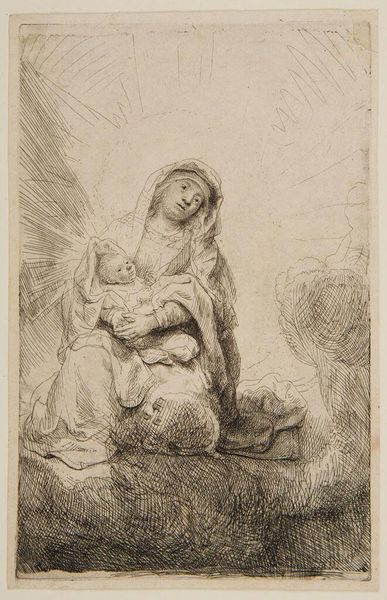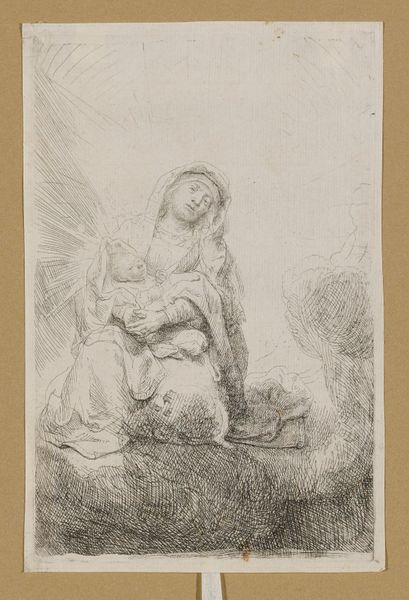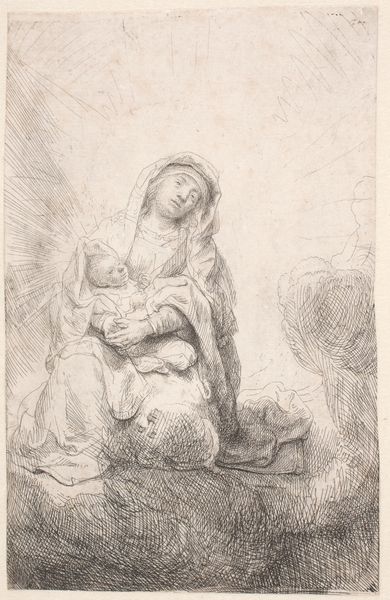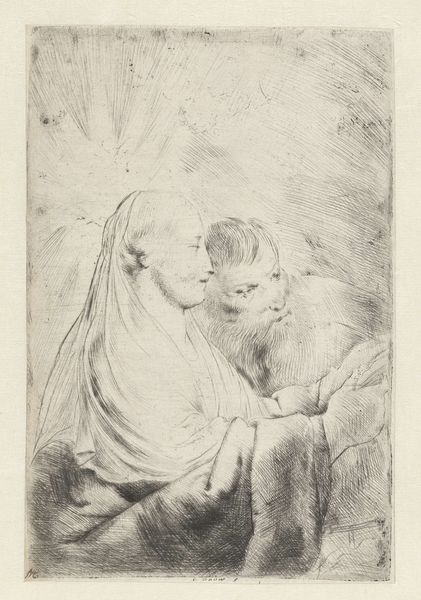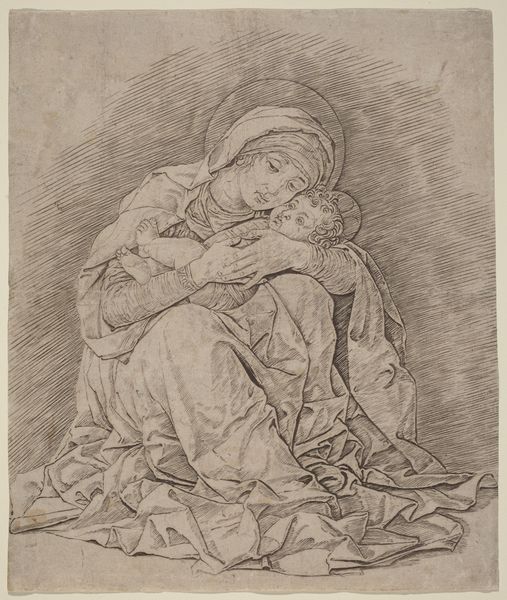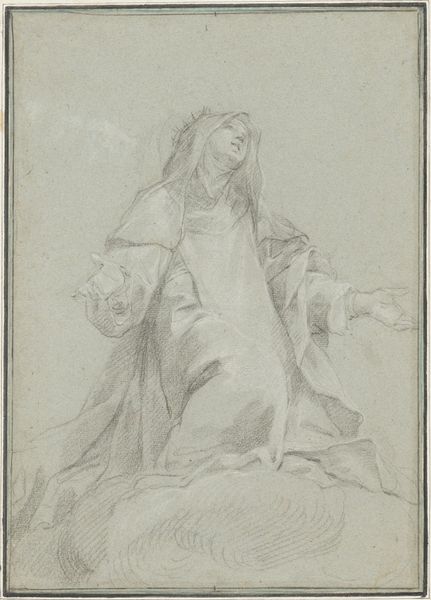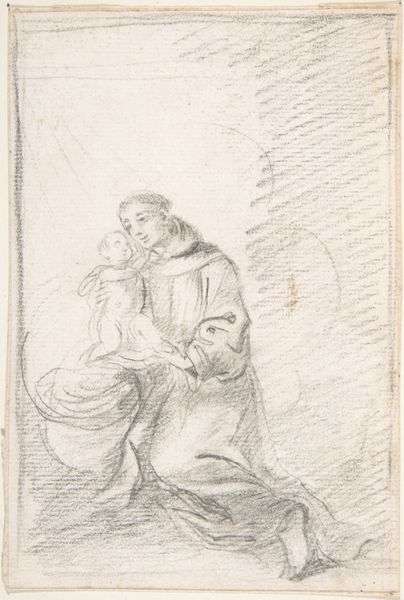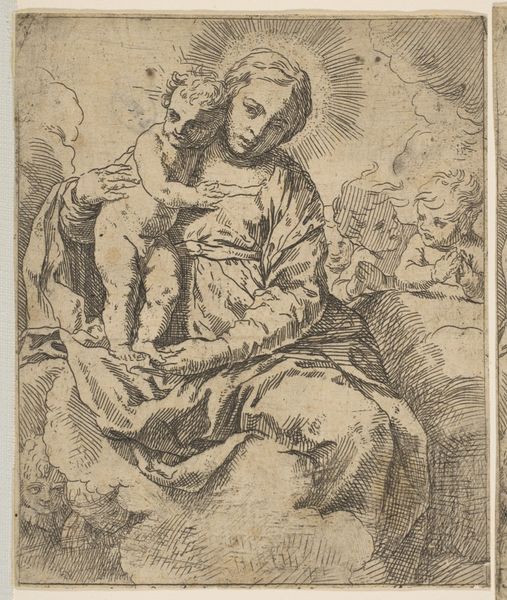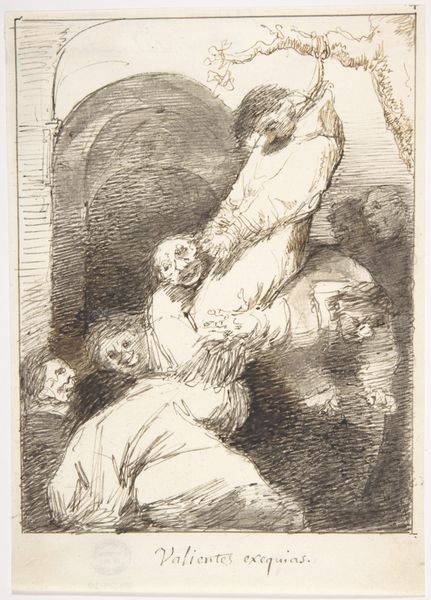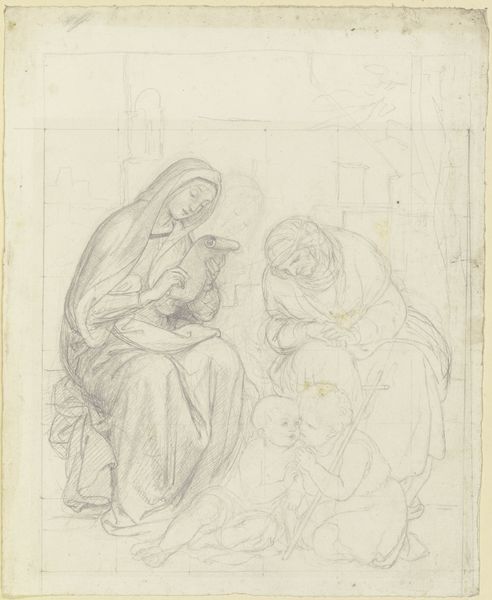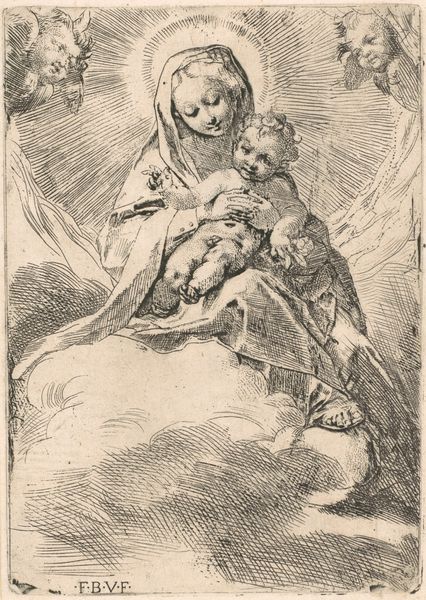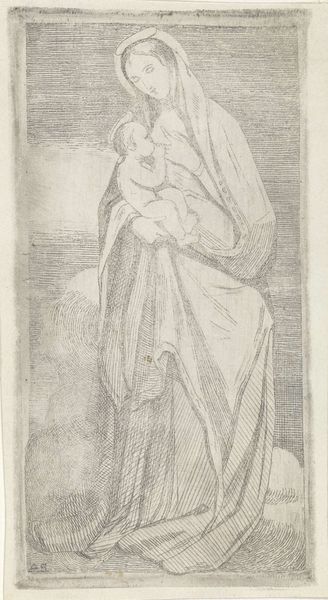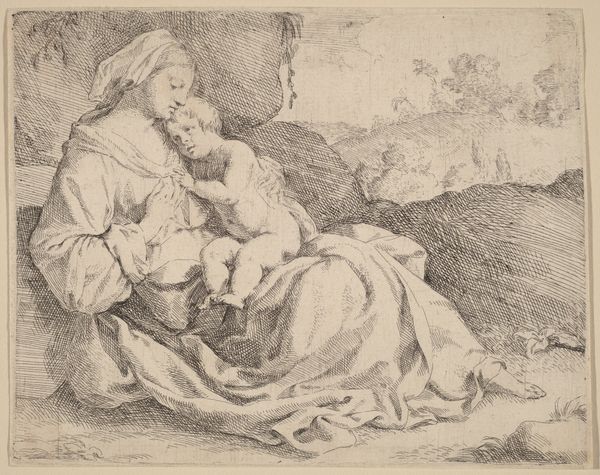
drawing, paper, ink
#
portrait
#
drawing
#
baroque
#
charcoal drawing
#
paper
#
ink
#
pencil drawing
Dimensions: height 152 mm, width 105 mm
Copyright: Rijks Museum: Open Domain
Editor: Here we have Rembrandt van Rijn's "The Virgin and Child in the Clouds," created in 1641, using ink, charcoal, and pencil on paper, residing at the Rijksmuseum. The ethereal rendering almost floats off the page. The tenderness feels immediate. As a historian, what strikes you most about this drawing? Curator: What jumps out is how Rembrandt democratized religious imagery. Before, representations of the Virgin were often highly idealized, emphasizing her divine status. Here, there's a vulnerability, an accessibility. Notice the soft lines, the way she's looking down almost sorrowfully. How does this portrayal challenge existing power structures and religious dogma? Editor: So, it's almost a humanization, making it more relatable rather than purely an object of worship? Was this a common approach at the time? Curator: Precisely. The Reformation had already challenged the Catholic Church's monopoly on religious interpretation, and Rembrandt was working within a broader cultural shift towards personal piety. These kinds of accessible images catered to an increasingly literate and prosperous middle class eager to engage with faith on their own terms. Notice how it also lends itself well to reproduction through printmaking. This speaks to the dissemination of such imagery. Who controlled the access and production of images during this period? What do you see? Editor: The guilds and powerful patrons? Maybe this looser style subverted those controls, enabling wider accessibility. This artwork almost presents two stories at once – a religious scene, but also a cultural moment in time. Curator: Exactly. What social needs did such a humble representation of the virgin address? Editor: That it enabled everyday folk to connect with this imagery as more of an idealized idea. Curator: Food for thought. Thanks for pointing out those wonderful thoughts; that was great!
Comments
No comments
Be the first to comment and join the conversation on the ultimate creative platform.
